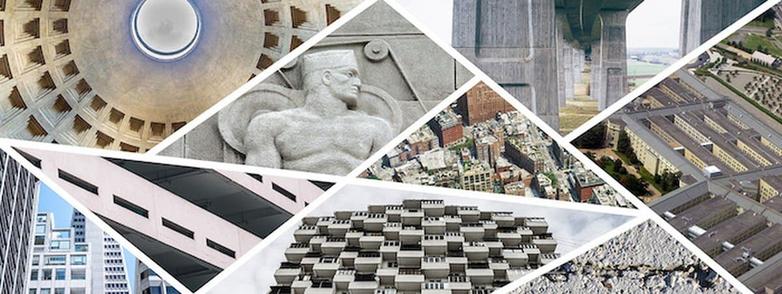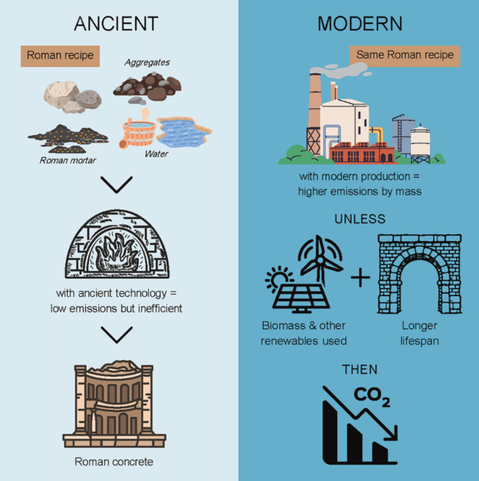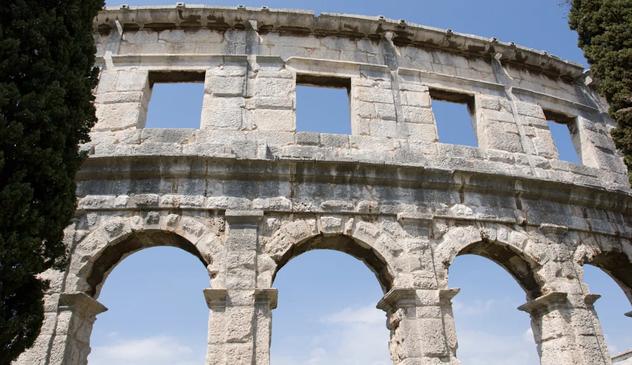The Road to #LowCarbon #Concrete
For thousands of years, humanity has had a love affair with cement and concrete. But now, industry groups and researchers are seeking solutions to the huge amounts of carbon dioxide that cement-making generates.
M. Mitchell Waldrop, November 16, 2022
Excerpt: " To tackle the other 60 percent of cement emissions — the CO2 that’s released on the right-hand side of the calcination reaction — the industry is beginning to revive some old alternatives for cement’s raw materials.
"Simply by adding some powdered, unbaked limestone to its final product, for example, a kiln’s carbon footprint can be reduced as much as 10 percent. (Limestone alone is relatively inert but will help Portland cement harden when it’s mixed with water.) This Portland-limestone cement is already commonly used in Europe and is now taking off in the United States. 'We’re seeing regions of the country where Portland-limestone cements are the predominant material and we’re hearing individual plants say that they’re only going to produce this type from now on,' Bohan says.
"Kiln operators are also taking a fresh look at replacing some of their limestone-based cement with mineral-rich industrial waste products. One commonly used example is blast-furnace slag from steel mills, which is rich in calcium and hardens like standard cement when it’s mixed with water. Another is fly ash from coal-fired power plants, which doesn’t harden on its own, but does when it’s mixed with water and standard cement. Either way, the resulting cement yields concrete that is at least as strong and durable as the standard variety, if somewhat more abrasive and slower to cure, while potentially trimming emissions by another 15 or even 20 percent.
"Granted, there was a lot of carbon dioxide emitted during the original creation of these wastes. But using them in cement doesn’t produce any new carbon. And two-plus centuries of industrialization have left a substantial backlog of slag and ash, even if we eventually phase out coal entirely. 'It’s a win-win. If you have the waste, then replacing your clinker with it is cheaper than producing new clinker,' says Andrew. Indeed, this technique is already widely used in fast-growing countries like Brazil and China, which are producing mountains of slag and ash as they build up their industries. "
https://getpocket.com/explore/item/the-road-to-low-carbon-concrete?utm_source=firefox-newtab-en-us
#Cement #Buildings #Infrastructure #PortlandCement #CarbonFootprint
Engineers Weigh Up Returning to #Ancient #RomanConcrete Recipes
Carly Cassella
Wed, July 30, 2025
"The ancient Romans might have taught us a thing or two about manufacturing #sustainable concrete that lasts for thousands of years.
"A new study has rigorously analyzed the raw materials and energy demands of their ancient recipe, revealing some useful ways to improve modern cement.
"Surprisingly, researchers found that producing Roman mortar and concrete requires more water and more greenhouse gas emissions than #PortlandCement – the most common type of cement used in concrete today.
"But while the initial energy costs may be steeper, Roman concrete formulations could ultimately prove more sustainable in the long run. That's because they may not need to be replaced or repaired as often."
Read more:
https://www.yahoo.com/news/articles/engineers-weigh-returning-ancient-roman-150048862.html
#Infrastructure #BuildingSustainably #MadeToLast #AncientTechnology #Concrete
Scientist makes groundbreaking discovery while studying ancient Roman technique for concrete: 'We have a huge potential'
by Calvin Coffee
Sun, August 31, 2025
"Concrete has a massive carbon footprint. One researcher from the University of Auckland is working to reduce it by studying ancient #Roman techniques. Using natural volcanic materials and industrial byproducts, he's incorporating #pumice and #seashells to create an #EcoFriendly, traditional alternative.
"At the Structures Testing Laboratory in Newmarket, New Zealand, Enrique Del Rey Castillo blends volcanic ash and kaimoana shells as replacements in the cement-making process, leveraging their #SelfHealing properties, which can repair cracks over time through natural chemical reactions.
"This initiative is crucial, as concrete is one of the world's most polluting materials, with global cement production accounting for 8% of total carbon emissions, contributing to rising global temperatures and increasing health risks.
"Del Rey Castillo has spent years testing how local materials can serve as sustainable alternatives. After focusing on conventional substitutes such as fly ash, he shifted to natural materials available nearby.
" 'I realised we have a huge potential in New Zealand with the use of natural #volcanic materials and #byproducts of primary industries,' Del Rey Castillo said.
"Concrete is essential for constructing bridges, roads, dams, and buildings, but its production releases over 4 billion tons of carbon dioxide annually. Calcining cement-primary materials at 1,500 degrees Celsius in a kiln emits large amounts of carbon dioxide and produces chemical reactions. Each pound of concrete releases 0.93 pounds of carbon dioxide.
"Pumice, however, doesn't require the energy-intensive calcining process; it just needs to be dried at 100 degrees Celsius to remove moisture before being ground into a fine powder. 'The carbon footprint is about 8-10% of the carbon footprint of cement,' Del Rey Castillo explained."
Read more:
https://www.yahoo.com/news/articles/scientist-makes-groundbreaking-discovery-while-184500351.html
#SelfHealingConcrete #RomanConcrete #ReusingByproducts #Concrete #CarbonFootprint #Infrastructure #SolarPunkSunday #AncientTechnology
Ooig, lovely news and I need that ☺️
Sorry for the missed typo, I am again WithCats 😂😻
I accidentally heard about the self healing properties a little over a year ago, I was so intrigued to find out about the chemical process that causes it. It really is so good that this is now done in this age. Great news!
Oh how wonderful ♥️♥️♥️
Modern construction is so bad for the environment.
@pascaline This kind of breakthrough gives me hope that maybe, just maybe, we can achieve the #StabilizedWorld scenario -- but using #AncientTechnology combined with what we know now!
#LtG #SolarPunkSunday #RomanConcrete #TraditionalKnowledge #AncientKnowledge #OldWays
That would be so wonderful. I am almost crying now.


